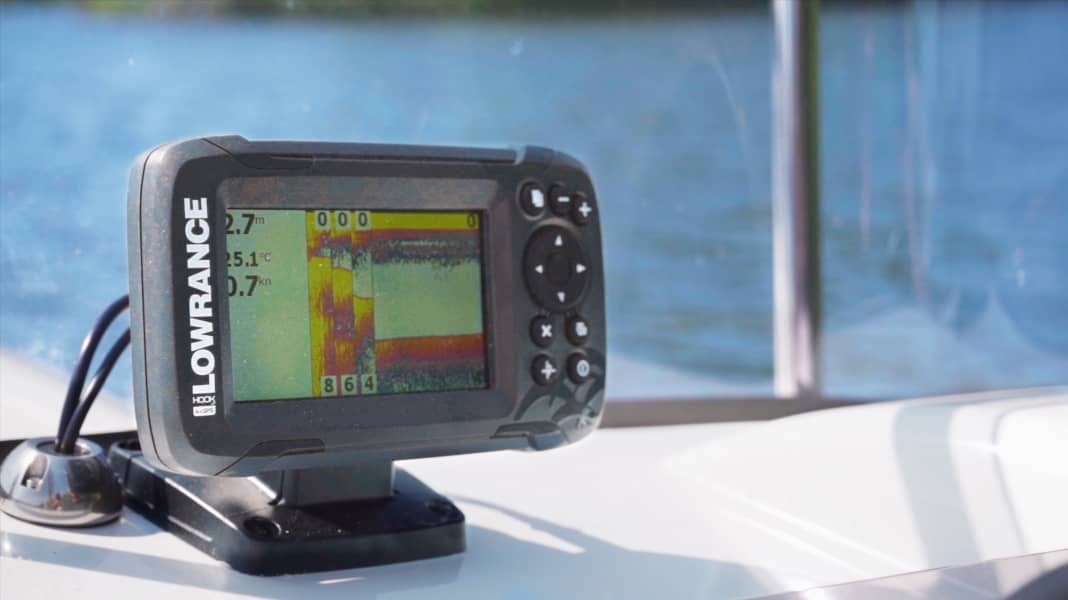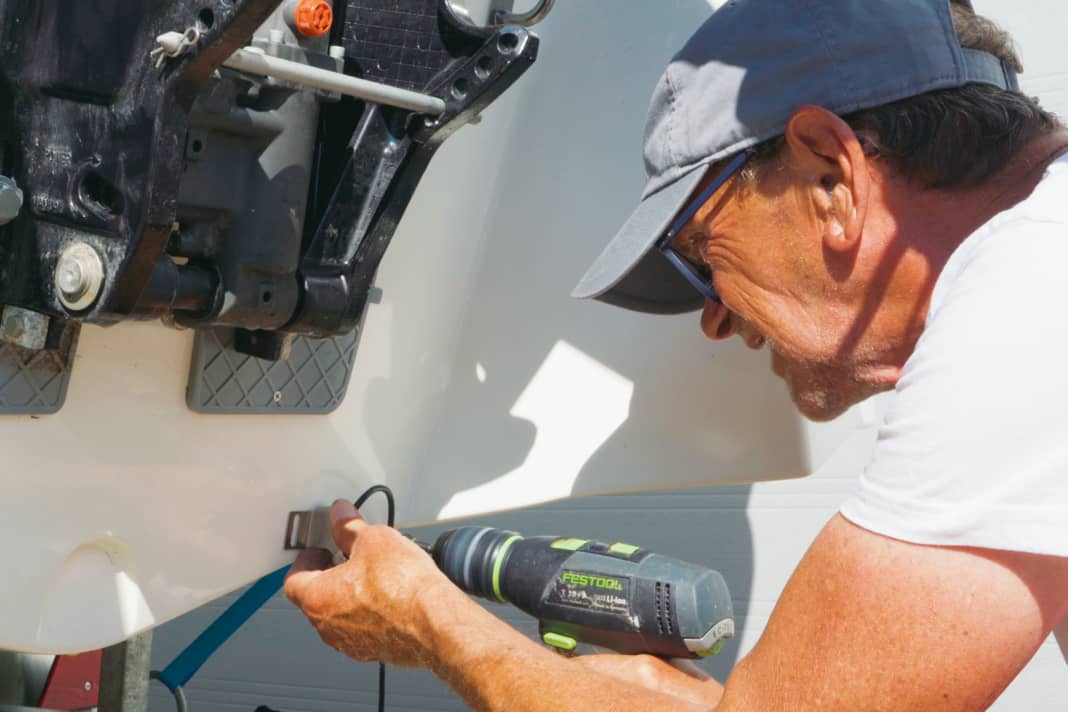
An echo sounder is a device used in shipping for the electro-acoustic measurement of water depths. Says Wikipedia and points out that an echo sounder increases safety when navigating. That's right. However, the online encyclopaedia fails to mention that echo sounders today can do much more than just measure water depth. Why not, after all, it is a free encyclopaedia (reference work) and not a marketing agency.
Echo sounder, fishfinder and GPS plotter in a device that's not much bigger than a thick packet of cigarettes? Modern electronics make it possible. We decided to upgrade our Pegazus 450 with a Lowrance Hook 4 from the Bauhaus catalogue because we wanted it to be good. Why? It has an easy-to-mount transom-mounted transducer and shows the water and the bottom under the boat on its 4-inch display. In colour, of course. If you look carefully, you can easily recognise fish, which are displayed either as arches or fish symbols, and the structure of the "seabed". Water depth, temperature and speed are displayed digitally. Speed information is provided by an integrated GPS aerial. We decided not to purchase the plotter function, making the Hook 4, which costs 116 euros, a real bargain.
The transducer must be in the correct position
When mounting the transducer, which is attached to the transom with sealant and two screws, it is important to mount it vertically and horizontally in the horizontal plane. This compensates for the inclination of the hull shape (upward tilting) and the emitted signal goes vertically downwards. It is also important that the flow to the transducer is uniform in every situation. In other words, it must always be in bubble-free water. The perfect position for the transducer is quickly found on the Pegazus 450. On the starboard side, not too close to the engine and not too far out. The transducer cable is laid and fastened along the engine mounting plate. This saves us having to fit a cable conduit.
The display "lands" on the steering console in front of the steering wheel, whereby we take great care not to restrict the space available on the shelf too much. During the "fitting", the holes for the cable feed-through and the display holder are marked with a small drill. Once the markings have been made, the holes are drilled to "true size" and the feed-through and bracket are fitted with sealing compound and screwed in place.
The cable connections for the 12-volt power supply are a real advantage in terms of location. The distances to the fuse box (positive cable) and the earth cable (negative cable), both mounted in the control console, are extremely short. The only tricky part is laying the transducer cable to the control stand. The reason: the cable ducts are full. The solution to the problem: an additional cable tray that is self-adhesively attached to the routing in the cockpit.
Photo instruction: Install echo sounder






Conclusion
If you know how to use a drill and screwdriver and can distinguish between positive and negative cables, you will have no problem installing the depth sounder.
